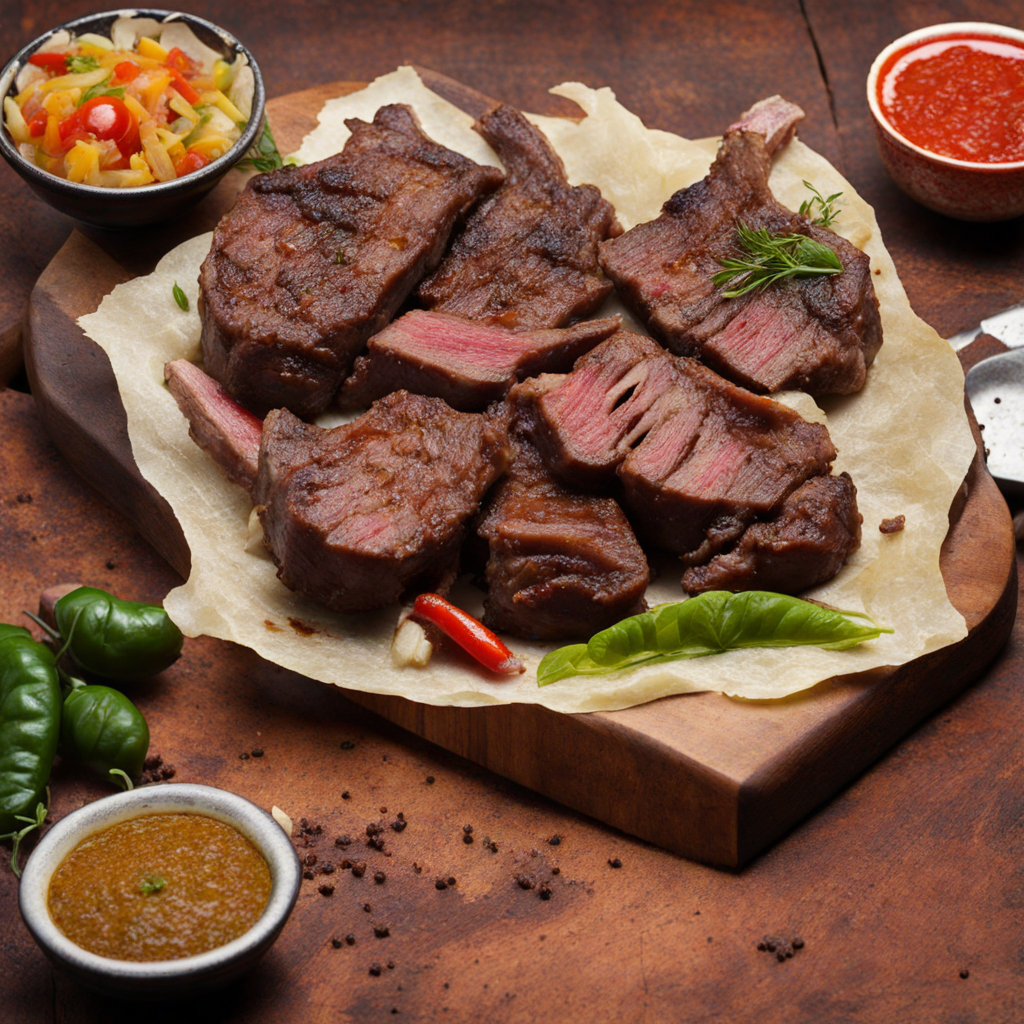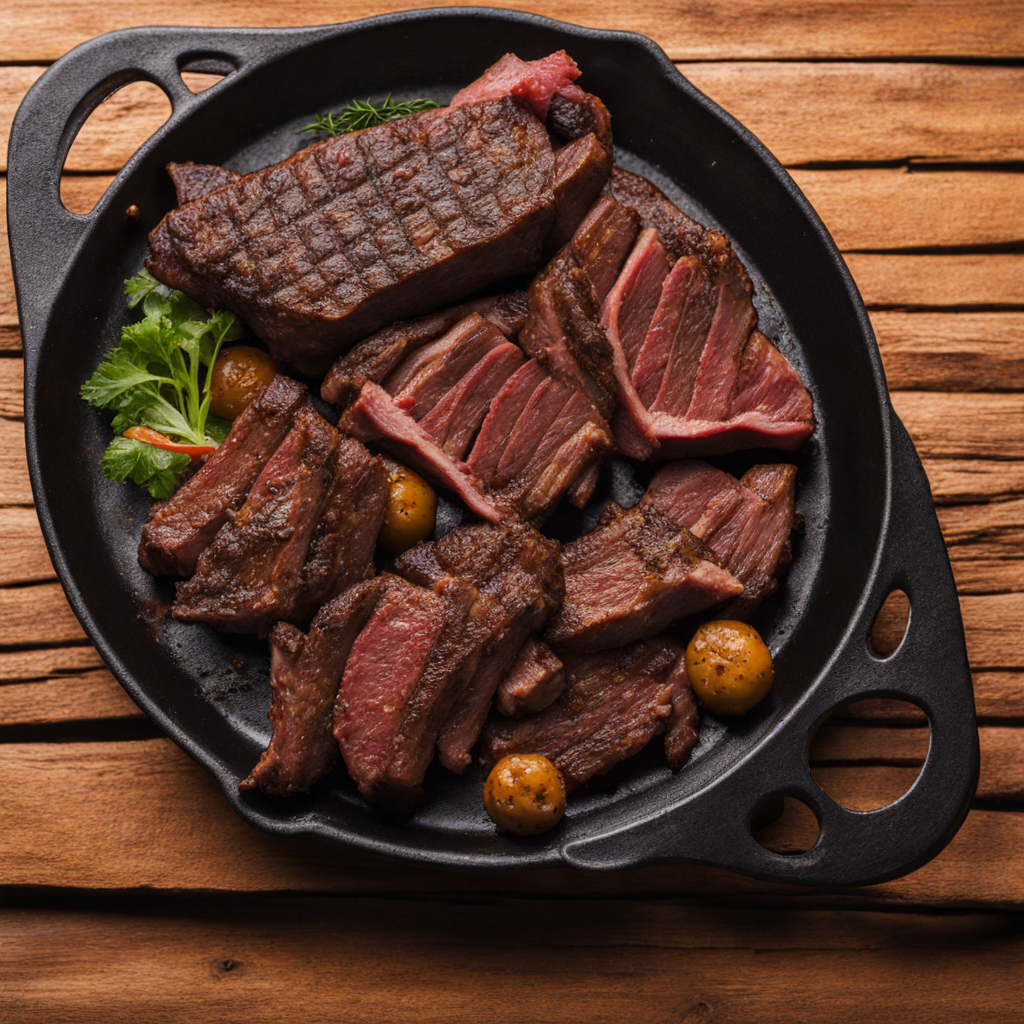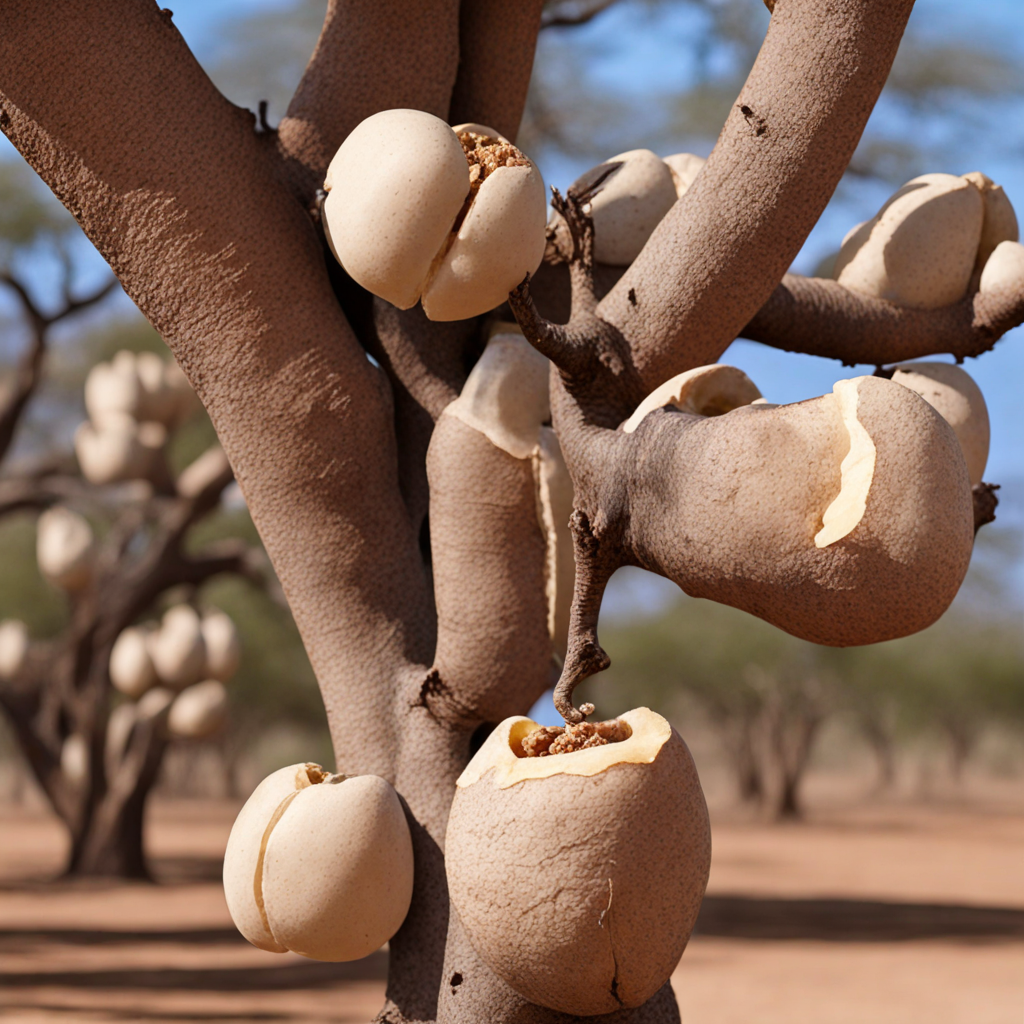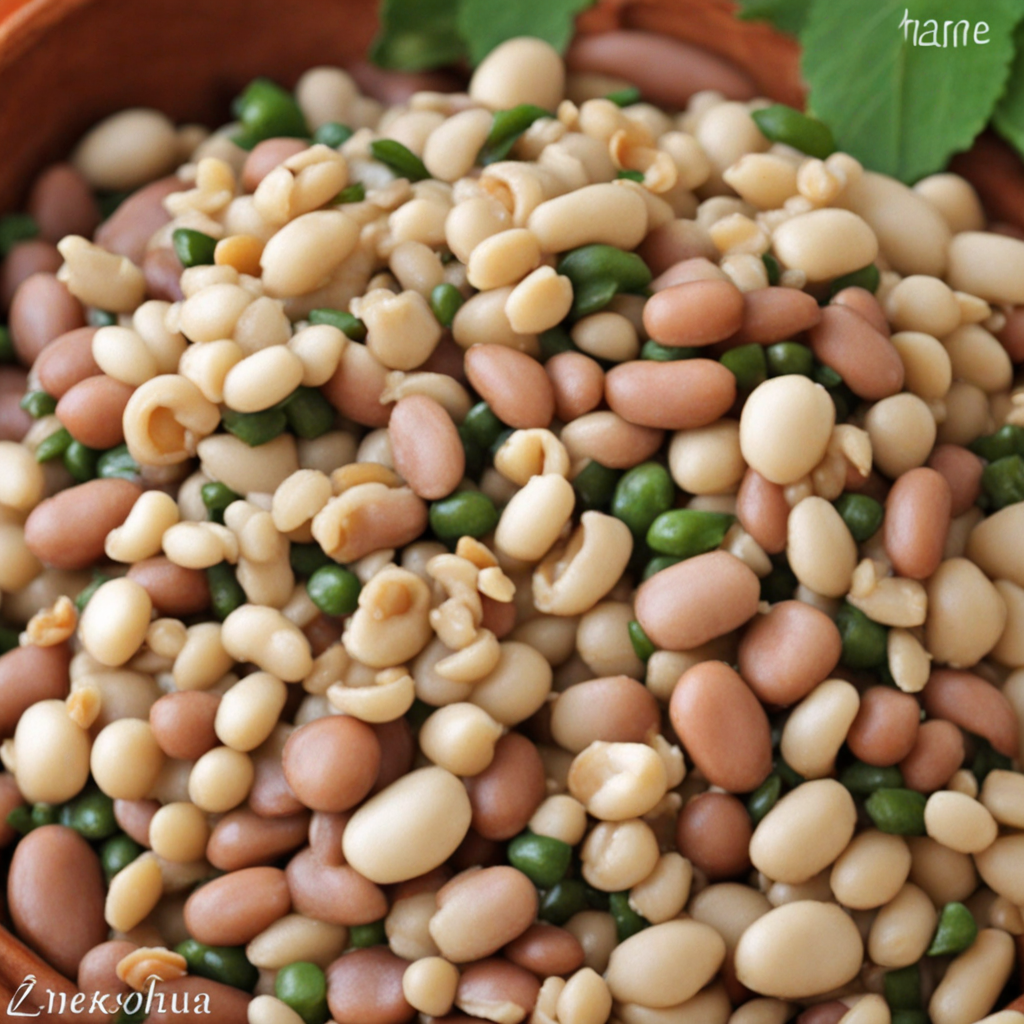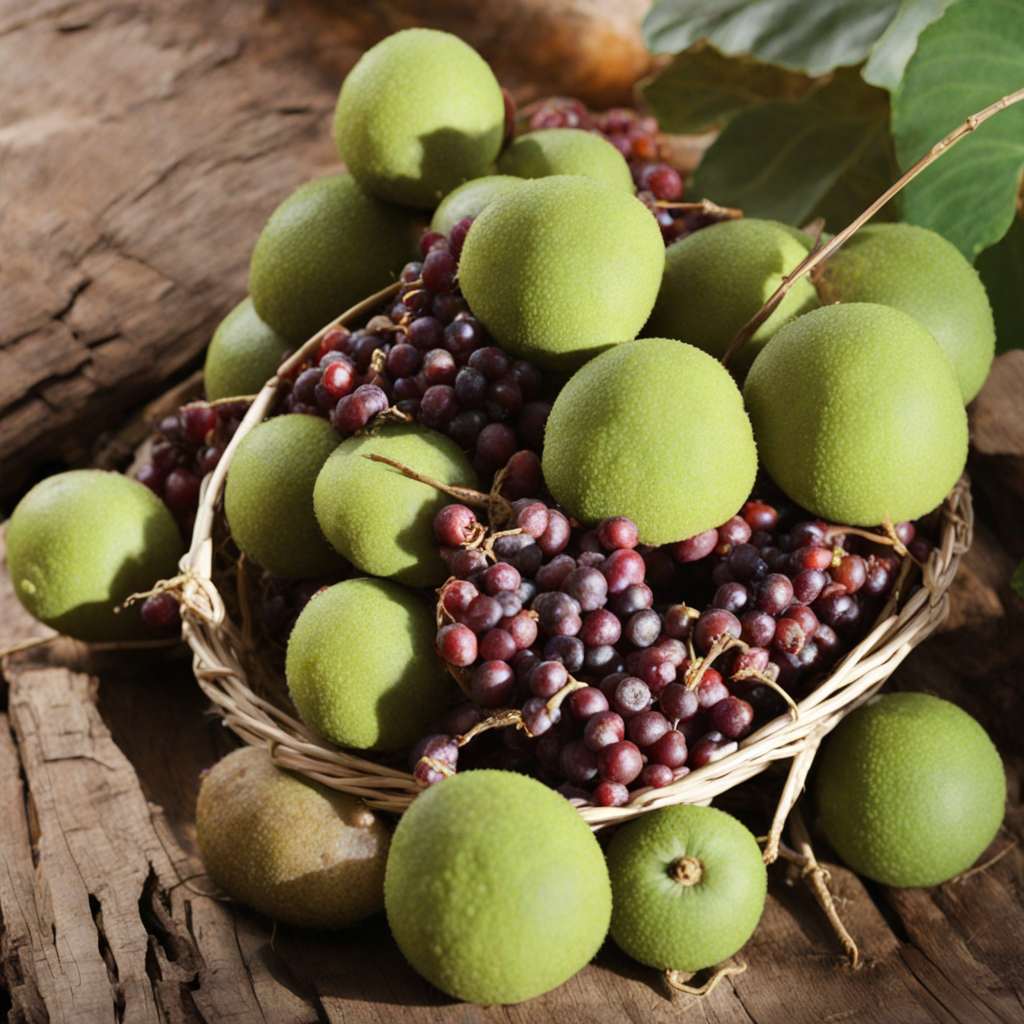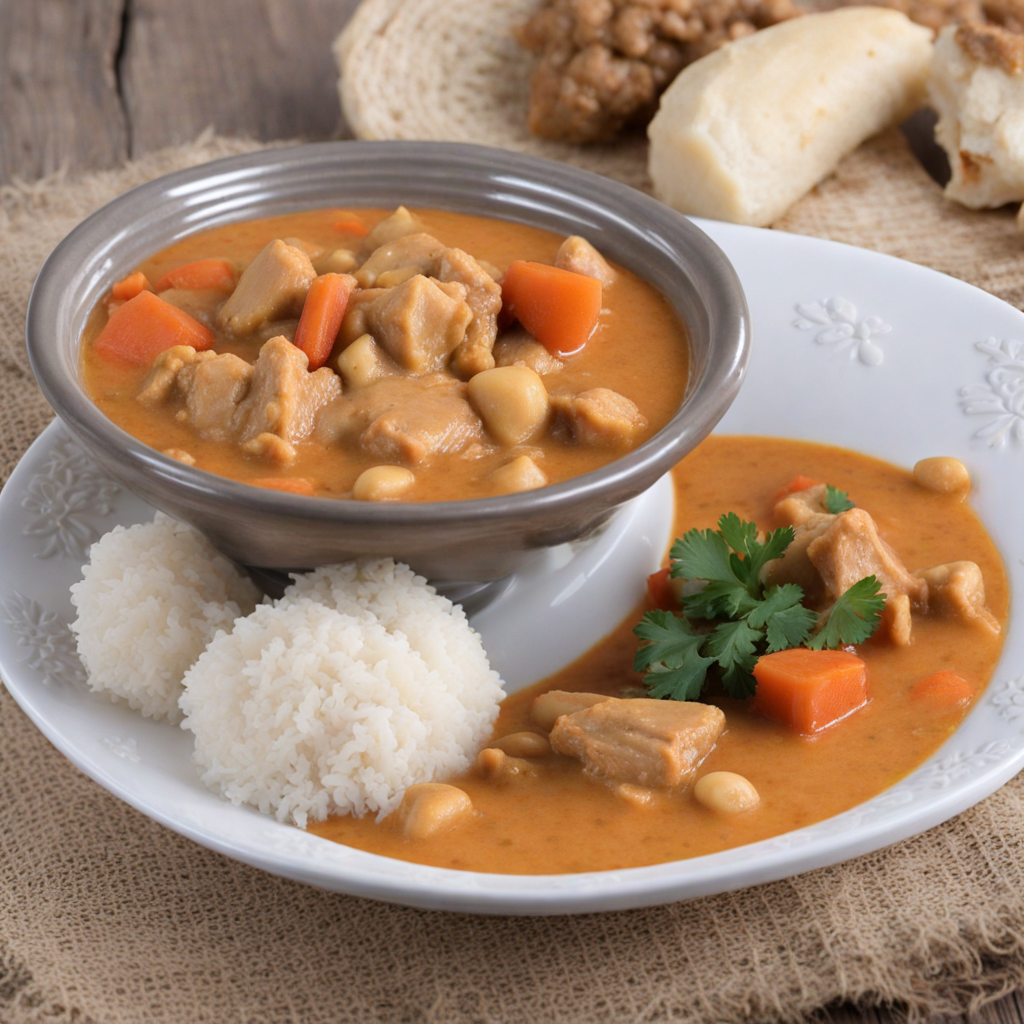Nyama
Nyama is a traditional Zimbabwean dish that primarily features grilled or roasted meat, often beef or goat, seasoned to perfection. The word 'nyama' translates to 'meat' in Shona, one of the predominant languages spoken in Zimbabwe. The preparation of Nyama typically involves marinating the meat in a blend of local spices, herbs, and sometimes citrus juices to enhance its natural flavors. This process infuses the meat with a delightful smokiness, especially when cooked over an open flame or in a traditional braai (barbecue) setting, which is a beloved social activity in Zimbabwean culture. Accompanying the Nyama are often staple side dishes that provide a well-rounded meal. Popular additions include sadza, a thick cornmeal porridge that serves as a hearty base, and is often used to scoop up the meat. Vegetable dishes such as collard greens or roasted pumpkin are also common, adding color and nutrition to the plate. The combination of the rich, savory meat with the mild, comforting flavor of sadza creates a satisfying balance that is both filling and delicious. Nyama is not just a meal; it represents a communal experience, often enjoyed during gatherings and celebrations. The act of sharing this dish among family and friends fosters a sense of togetherness and connection. The flavors of Nyama are deeply rooted in Zimbabwean culinary traditions, making it a dish worth exploring for anyone eager to experience the vibrant tastes of Zimbabwe. Each bite offers a glimpse into the country’s rich heritage and the warm hospitality of its people.
How It Became This Dish
The History of Nyama in Zimbabwe Origin of Nyama Nyama, a term that translates directly to "meat" in Shona, the predominant language spoken in Zimbabwe, encompasses a variety of meats, but is particularly associated with beef, goat, and chicken dishes. The roots of Nyama can be traced back to the early hunter-gatherer societies that populated the region. The earliest inhabitants of Zimbabwe, including the San people, relied on hunting wild game for sustenance. This practice laid the groundwork for the importance of meat in the culinary traditions of the land. As farming practices developed, particularly with the advent of cattle herding and agriculture, the significance of livestock grew. The introduction of cattle into Zimbabwe is believed to have come with the Bantu migrations around 300 AD. Cattle not only provided a reliable source of protein through meat but also became a symbol of wealth and status among the tribes. The Shona people, who formed the majority ethnic group, revered cattle, and their significance extended beyond the culinary realm into social and religious contexts. Cultural Significance Nyama holds deep cultural significance in Zimbabwean society. It is often at the heart of communal gatherings, celebrations, and ceremonies. Traditional ceremonies such as weddings, funerals, and the initiation rites of young people often feature Nyama as a central dish. The preparation and sharing of meat symbolize hospitality, generosity, and community bonding. In many rural areas, the act of slaughtering an animal is not taken lightly; it is often accompanied by prayer and rituals to honor the spirits of the ancestors. The meat is usually cooked over an open fire, creating a communal atmosphere that embodies the spirit of togetherness. Nyama is often served with sadza, a staple made from maize meal, which complements the dish and serves as a base for the meal, emphasizing the importance of balance in traditional Zimbabwean cuisine. Moreover, meat in Zimbabwean culture is often associated with masculinity and strength. There is a saying in Shona, “Kudya nyama,” which means “to eat meat,” implying a rite of passage into manhood. Men are often tasked with the responsibility of preparing Nyama, particularly during community events, which reinforces gender roles within the culture. Development Over Time The evolution of Nyama as a dish reflects the broader historical and socio-economic changes in Zimbabwe. In the pre-colonial era, meat was primarily sourced from wild game and domesticated animals. The arrival of European settlers in the late 19th century and the subsequent colonization of Zimbabwe brought changes to land ownership, cattle farming, and meat consumption patterns. The establishment of ranches and commercial farms altered traditional grazing practices and introduced new breeds of cattle, which affected the quality and quantity of meat available. Additionally, the influence of global trade and the introduction of foreign cuisines began to diversify the way Nyama was prepared and consumed. In the post-independence era (after 1980), Zimbabweans faced significant economic challenges, including hyperinflation and food scarcity. During this time, the traditional practices surrounding Nyama adapted to the changing socio-economic landscape. Many families began to rely on alternative sources of protein due to the rising costs of beef and other meats. Poultry became a more accessible option, leading to an increase in chicken dishes within the Nyama repertoire. As urbanization increased, so did the emergence of fast food and modern culinary practices. Nyama was no longer limited to traditional settings; it began to be incorporated into street food culture, with popular dishes like nyama choma (grilled meat) becoming a favorite among city dwellers. This adaptation illustrates the resilience of culinary traditions in the face of modern influences. Modern Interpretations of Nyama Today, Nyama continues to be an integral part of Zimbabwean cuisine, celebrated not only within the country but also among the Zimbabwean diaspora around the world. Contemporary interpretations of Nyama often blend traditional techniques with modern culinary practices, resulting in a dynamic food culture that honors its roots while embracing innovation. Restaurants and food stalls specializing in Nyama have flourished in urban centers, offering a range of dishes from traditional braai (barbecue) styles to fusion meals that incorporate international flavors. For instance, Nyama can now be found in various forms, such as kebabs, curries, and stews, reflecting the culinary diversity that has emerged in Zimbabwean society. Moreover, social media has played a significant role in popularizing Nyama beyond the borders of Zimbabwe. Food bloggers and influencers showcase traditional recipes, cooking techniques, and the cultural narratives surrounding Nyama, fostering a sense of pride among Zimbabweans and curiosity among food enthusiasts worldwide. Conclusion The history of Nyama in Zimbabwe is a testament to the rich tapestry of cultural, social, and economic influences that have shaped the nation. From its origins in ancient hunter-gatherer societies to its modern-day interpretations, Nyama remains a symbol of identity, community, and resilience. It embodies the spirit of Zimbabwe, where food is not merely sustenance but a celebration of life, culture, and shared experiences. As Zimbabwe continues to navigate its complex landscape, the evolution of Nyama will undoubtedly reflect the changing dynamics of society. Whether enjoyed in a rural homestead, a bustling city eatery, or a family gathering abroad, Nyama will continue to resonate with Zimbabweans and serve as a reminder of their rich heritage and culinary traditions.
You may like
Discover local flavors from Zimbabwe


